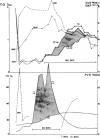Abstract
Major electrocardiographic, haemodynamic, and histopathological changes take place during the development of brain death; myocardial and pulmonary injury may result. Significant depletion of certain circulating hormones occurs, resulting in an inhibition of mitochondrial function, leading to reduced aerobic metabolic oxidative processes, affecting the body as a whole. Major organ energy stores are therefore diminished, leading to deterioration of function. Replacement of the depleted hormones, in particular triiodothyronine (T3), cortisol, and insulin, leads to rapid replacement of organ energy stores, associated with a return to normal function. T3 alone leads to reactivation of the mitochondria, stimulating aerobic metabolism. Hormonal therapy to brain-dead potential organ donors has been shown to lead to metabolic and haemodynamic stability, resulting in no wastage of organs, and in improved function after transplantation.
Full text
PDF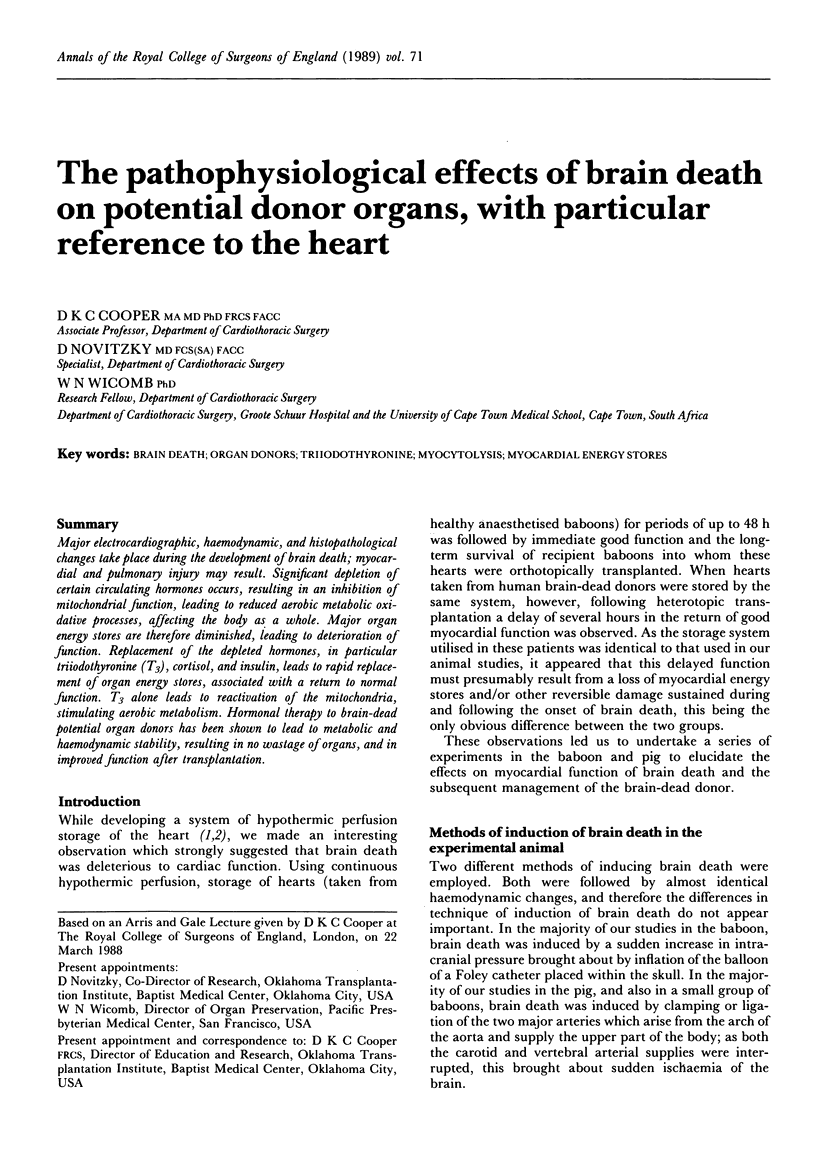
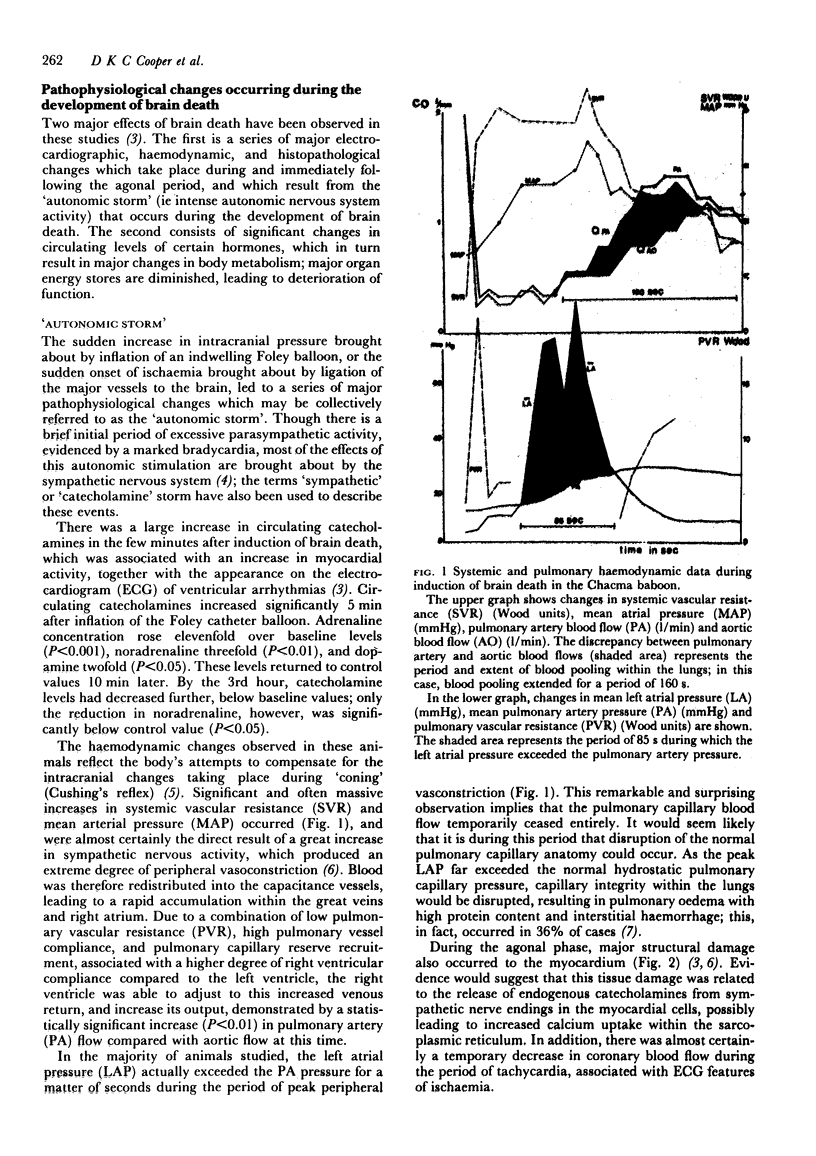
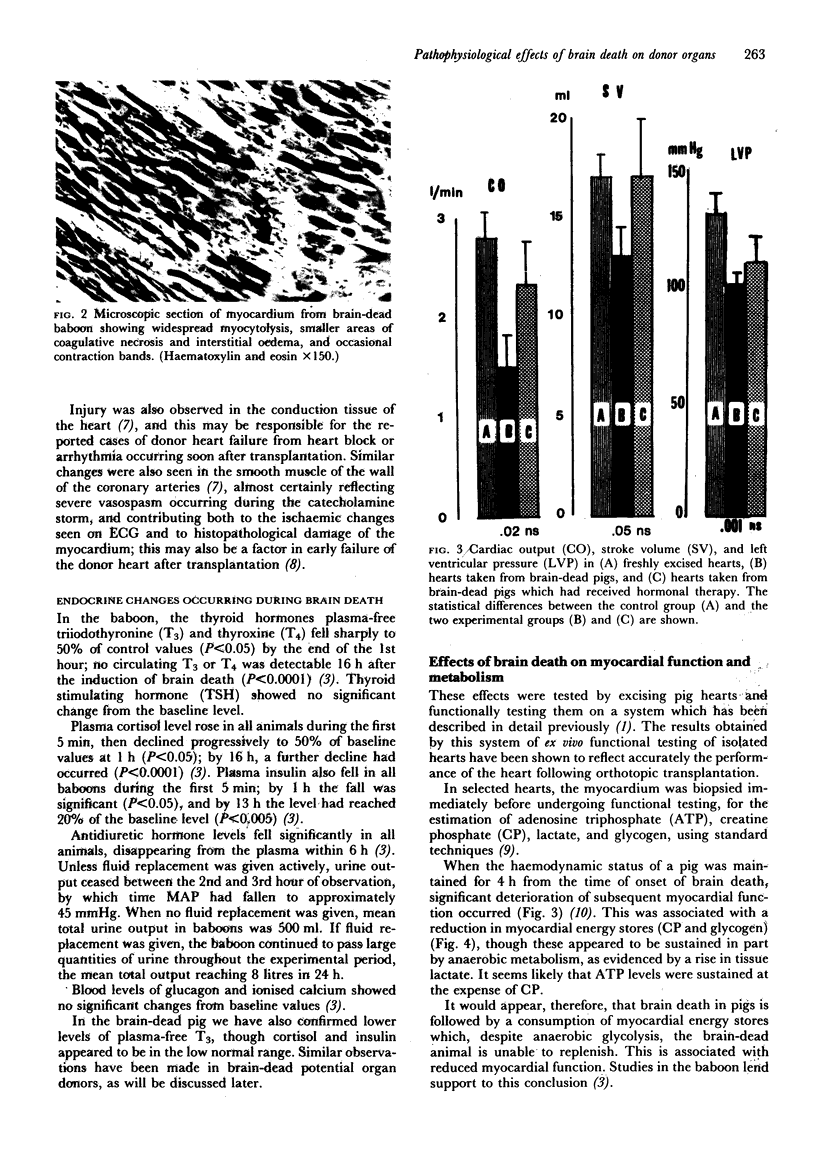
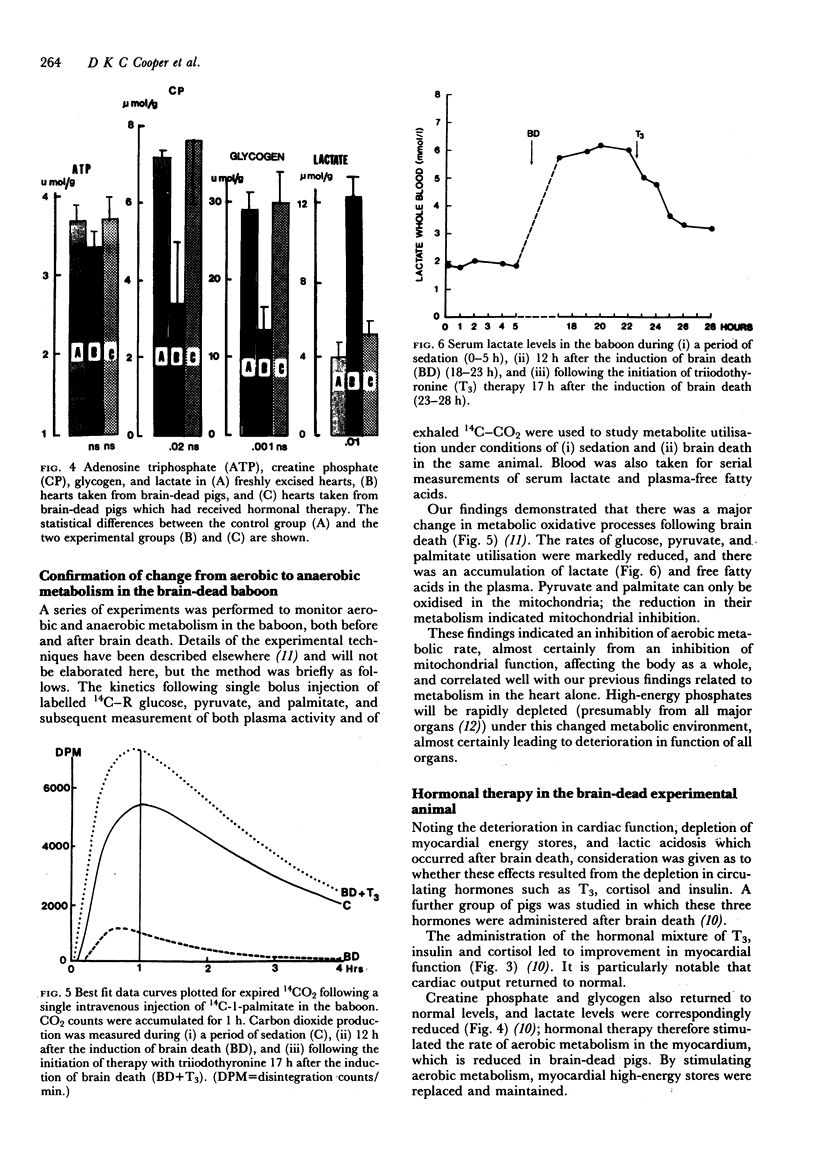
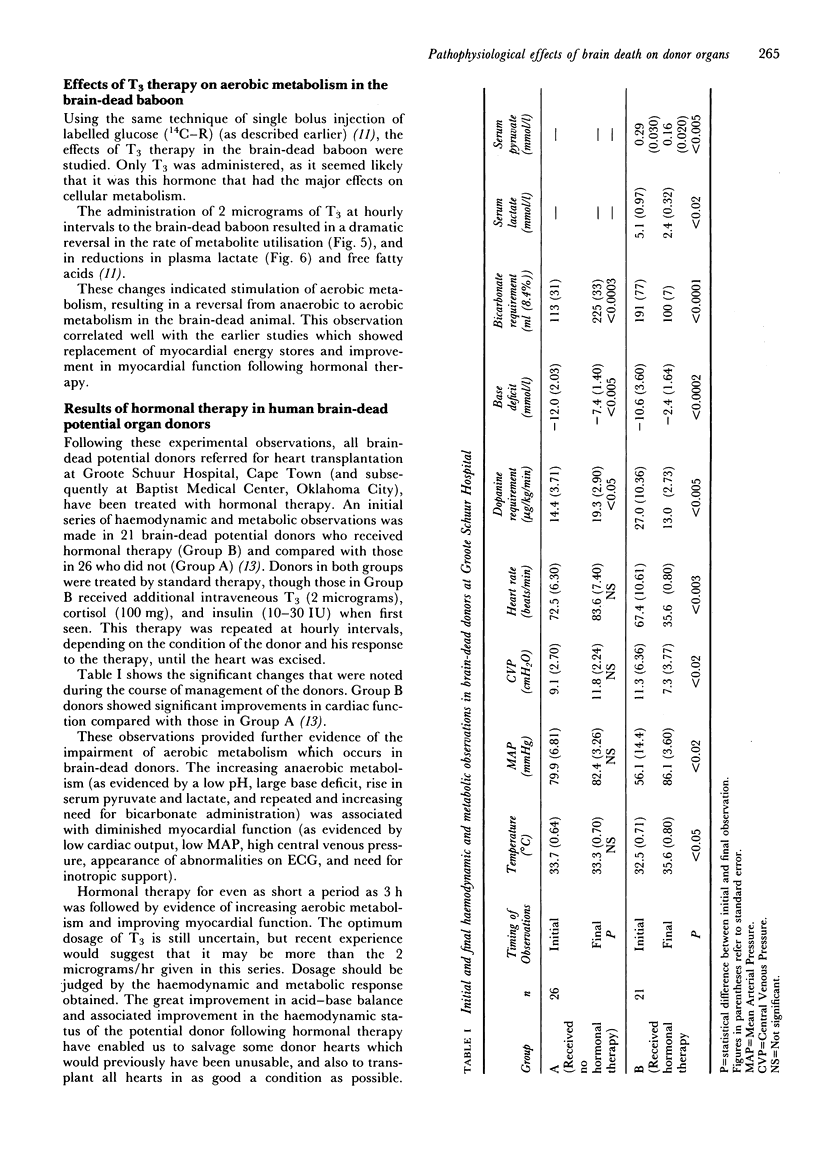
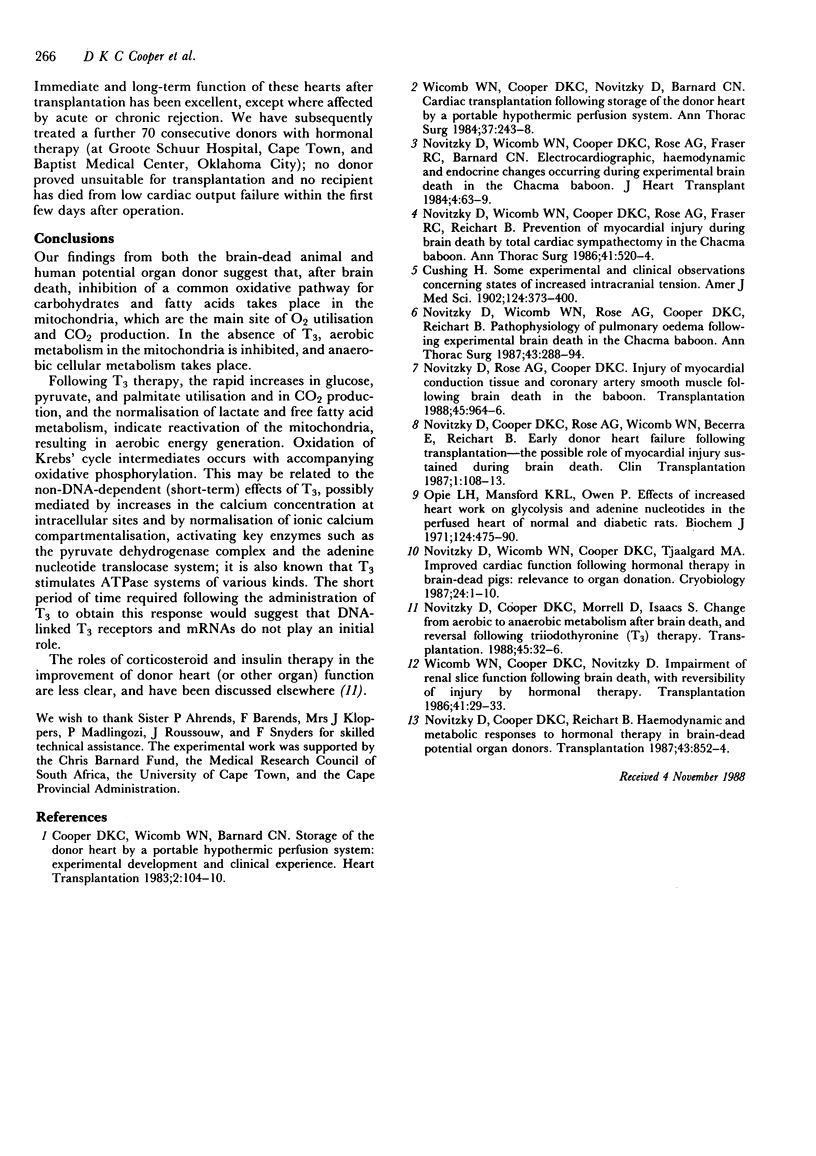
Images in this article
Selected References
These references are in PubMed. This may not be the complete list of references from this article.
- Novitzky D., Cooper D. K., Morrell D., Isaacs S. Change from aerobic to anaerobic metabolism after brain death, and reversal following triiodothyronine therapy. Transplantation. 1988 Jan;45(1):32–36. doi: 10.1097/00007890-198801000-00008. [DOI] [PubMed] [Google Scholar]
- Novitzky D., Cooper D. K., Reichart B. Hemodynamic and metabolic responses to hormonal therapy in brain-dead potential organ donors. Transplantation. 1987 Jun;43(6):852–854. [PubMed] [Google Scholar]
- Novitzky D., Rose A. G., Cooper D. K. Injury of myocardial conduction tissue and coronary artery smooth muscle following brain death in the baboon. Transplantation. 1988 May;45(5):964–966. doi: 10.1097/00007890-198805000-00025. [DOI] [PubMed] [Google Scholar]
- Novitzky D., Wicomb W. N., Cooper D. K., Rose A. G., Reichart B. Prevention of myocardial injury during brain death by total cardiac sympathectomy in the Chacma baboon. Ann Thorac Surg. 1986 May;41(5):520–524. doi: 10.1016/s0003-4975(10)63032-9. [DOI] [PubMed] [Google Scholar]
- Novitzky D., Wicomb W. N., Cooper D. K., Tjaalgard M. A. Improved cardiac function following hormonal therapy in brain dead pigs: relevance to organ donation. Cryobiology. 1987 Feb;24(1):1–10. doi: 10.1016/0011-2240(87)90002-2. [DOI] [PubMed] [Google Scholar]
- Novitzky D., Wicomb W. N., Rose A. G., Cooper D. K., Reichart B. Pathophysiology of pulmonary edema following experimental brain death in the chacma baboon. Ann Thorac Surg. 1987 Mar;43(3):288–294. doi: 10.1016/s0003-4975(10)60615-7. [DOI] [PubMed] [Google Scholar]
- Wicomb W. N., Cooper D. K., Novitzky D., Barnard C. N. Cardiac transplantation following storage of the donor heart by a portable hypothermic perfusion system. Ann Thorac Surg. 1984 Mar;37(3):243–248. doi: 10.1016/s0003-4975(10)60333-5. [DOI] [PubMed] [Google Scholar]
- Wicomb W. N., Cooper D. K., Novitzky D. Impairment of renal slice function following brain death, with reversibility of injury by hormonal therapy. Transplantation. 1986 Jan;41(1):29–33. doi: 10.1097/00007890-198601000-00005. [DOI] [PubMed] [Google Scholar]



